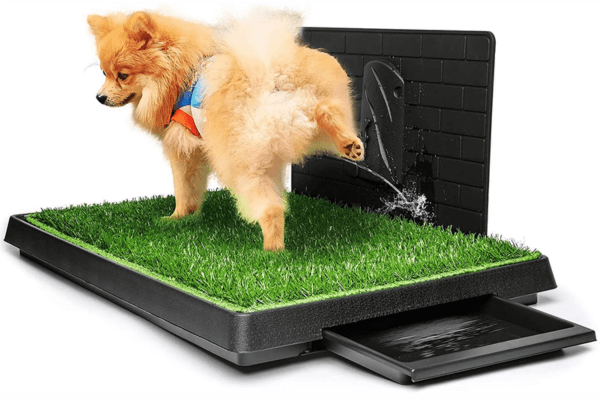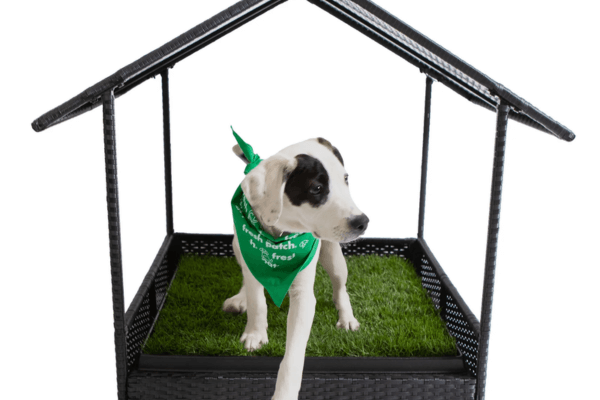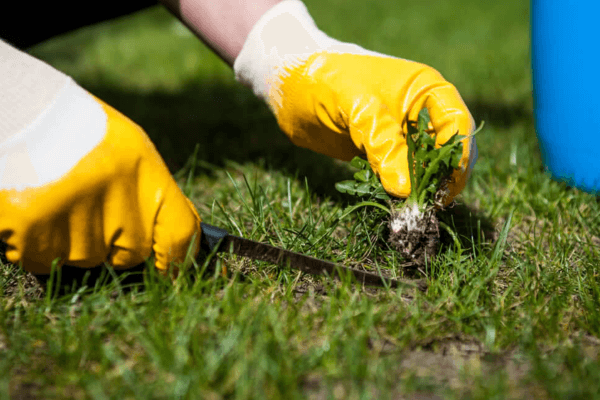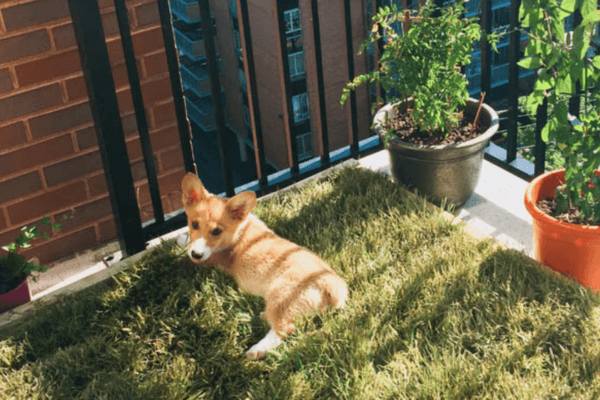One potential objection to the idea of a grass patch for dogs is the perception that it may be an unnecessary luxury or indulgence. However, when considering the well-being and overall health of our canine companions, providing them with a designated space for relieving themselves can have numerous benefits.
This article aims to explore the advantages of having a grass patch for dogs and provide guidance on how to choose, set up, maintain, and train dogs to use such patches.
A grass patch offers a natural and comfortable surface for dogs to eliminate on, mimicking their instinctual preference for outdoor environments. It also helps prevent damage to lawns or indoor flooring caused by frequent urination or defecation.
Moreover, having a dedicated area for toileting can aid in housebreaking puppies or retraining older dogs who struggle with indoor accidents. By addressing common concerns and offering practical advice, this article seeks to assist dog owners in creating an environment that promotes proper elimination behavior while ensuring the comfort and happiness of their furry friends.
Key Takeaways
- Grass patches for dogs provide a natural and comfortable surface for elimination, mimicking their preference for outdoor environments.
- Grass patches prevent damage to lawns or indoor flooring, making them ideal for housebreaking puppies and retraining older dogs.
- Synthetic turf for dogs offers durability, easy maintenance, and resistance to odor and stains, making it a convenient option for dog owners.
- Regular maintenance and adherence to guidelines ensure the optimal condition of grass patches, including cleaning, inspecting for damage, and promoting grass health through watering and fertilizing.
Benefits of a Grass Patch for Dogs
One of the advantages of having a grass patch for dogs is that it provides them with a natural and comfortable surface to walk, play, and relieve themselves on. Dog friendly landscaping is becoming increasingly popular as pet owners seek alternatives to traditional lawns.

A grass patch offers numerous benefits for both dogs and their owners. Firstly, it allows dogs to engage in their natural behaviors such as running, digging, and rolling around without causing any harm or discomfort to themselves. It also provides a soft surface for them to walk on, reducing the risk of injury or strain on their joints.
Additionally, a grass patch can be easily cleaned and maintained, ensuring a clean environment for both pets and humans alike. Overall, investing in a grass patch for dogs promotes their well-being by providing them with a safe and enjoyable outdoor space.
How to Choose the Right Grass Patch for Your Dog
To select the most suitable turf area for canine companions, it is crucial to carefully consider the verdant expanse that best accommodates their natural instincts and provides them with an environment conducive to a sense of comfort, security, and contentment. When choosing a grass patch for your dog, there are various factors to keep in mind. Here are some key considerations:

- Types of artificial grass for dogs: Synthetic turf specifically designed for dogs offers several benefits such as durability, easy maintenance, and resistance to odor and stains. Look for options that have good drainage systems to prevent puddles or urine buildup.
- Alternatives to grass patches for dogs: If artificial grass is not suitable or preferred, there are alternatives available. Some pet owners opt for real grass patches that can be grown indoors or on balconies. Others choose specialized dog-friendly potty pads or even designated areas with gravel or mulch.
By carefully considering these options, you can provide your furry friend with a comfortable and convenient space while maintaining cleanliness and hygiene in your home.
Setting Up and Maintaining Your Grass Patch
When establishing and upkeeping your turf area, it is essential to follow a systematic approach that involves regular maintenance and adherence to specific guidelines in order to ensure its longevity and optimal condition.
To set up a dog-friendly backyard, consider using artificial turf or a designated grass patch that can withstand the wear and tear caused by your furry friend.

When choosing a grass patch, opt for varieties that are resistant to dog urine spots. Additionally, it is important to train your dog to use a specific area of the yard for their bathroom needs, as this can help prevent concentrated urine spots on the grass.
Providing plenty of water for your dog and diluting their urine through increased hydration can also minimize the impact on the grass.
Regularly watering, fertilizing, and aerating the turf will further promote its health and vitality in a dog-friendly environment.
Training Your Dog to Use the Grass Patch
A crucial step in creating a dog-friendly backyard involves effectively teaching your canine companion to utilize the designated area for their bathroom needs. Dog potty training is an essential aspect of responsible pet ownership, and it requires patience and consistency.

To train your dog to use the grass patch, begin by establishing a routine and taking them to the designated area at regular intervals throughout the day. Positive reinforcement techniques such as treats or praise can be used to reward your dog when they successfully eliminate on the grass patch.
It is also important to supervise your dog during this process to prevent accidents elsewhere in the yard.
In addition to grass patches, there are alternative options available for dog potty training, including artificial turf or pee pads indoors, which may be suitable for certain situations or environments.
Frequently Asked Questions about Grass Patches for Dogs
One common question regarding the use of designated areas for canine bathroom needs involves the frequency at which these areas should be cleaned and maintained. Dog owners often wonder how often they should clean their grass patches for dogs to ensure proper hygiene and prevent odors. The answer varies depending on several factors, such as the size of the grass patch, the number of dogs using it, and the weather conditions.
Generally, it is recommended to remove solid waste daily and thoroughly rinse the grass patch with water at least once a week. Additionally, regular maintenance includes inspecting for any signs of damage or wear and tear that may require repair or replacement. It is important to note that there are alternatives to grass patches available in the market, such as synthetic turf or pee pads, which may offer convenience and ease of cleaning for dog owners who prefer them over natural grass patches.
| FAQs about Grass Patches | ||
|---|---|---|
| Question | Answer | Keywords |
| How often should I clean my grass patch? | It is recommended to remove solid waste daily and rinse with water weekly. | dog potty training, maintenance frequency |
| Are there alternatives to grass patches? | Yes, synthetic turf or pee pads can be used as alternatives. | alternatives to grass patches |
See Also:
- Doggie Lawn
- Dog Grass Pad: Unleash a Cleaner, Happier & Greener Lifestyle
- Dog Diapers for Optimal Protection and Peace of Mind!
Conclusion
A grass patch for dogs offers numerous benefits such as providing a natural and safe space for them to relieve themselves. When choosing the right grass patch, considering factors like size and durability is crucial.
Additionally, setting up and maintaining the grass patch requires regular cleaning and proper drainage. Training your dog to use the grass patch may take time and patience but will ultimately make their bathroom habits more convenient.
Overall, a grass patch for dogs is an excellent solution for pet owners seeking a hygienic outdoor area that dogs can readily access. ‘Actions speak louder than words,’ so investing in a high-quality grass patch will undoubtedly enhance your dog’s well-being while simplifying the process of pet waste management.
If you can’t find the right dog for you to adopt locally, please consider adopting a dog from Bone Voyage Dog Rescue. We’ll fly with your dog to you.
Frequently Asked Questions
Can I use a grass patch for my dog if I live in an apartment or don’t have a backyard?
Grass patch alternatives, such as artificial turf or indoor pee pads, are beneficial for dog owners in apartments or without a backyard. These options provide a convenient and hygienic solution for dogs to relieve themselves indoors.
How often should I replace the grass patch?
Regular replacement of a grass patch is essential to ensure its effectiveness. Benefits include providing a natural relief area for dogs, promoting good hygiene, and preventing odors. Tips for maintenance involve regular cleaning, proper drainage, and monitoring for wear and tear.
Is it safe for my dog to eat the grass from the grass patch?
Incorporating grass into a dog’s diet can provide various benefits, such as aiding digestion and providing essential nutrients. However, for dogs with dietary restrictions, alternative options like vegetables or specialized dog food may be necessary.
Can I use a grass patch for multiple dogs?
Using a grass patch for potty training multiple dogs is akin to maintaining a communal garden. The pros include convenience and potential cost savings, while cons involve hygiene concerns and the need for regular cleaning and maintenance.
What is the average lifespan of a grass patch for dogs?
The average lifespan of a grass patch for dogs varies depending on factors such as usage, weather conditions, and maintenance. To extend its lifespan, regular watering, mowing at the correct height, and addressing any pet waste promptly are recommended maintenance tips.
